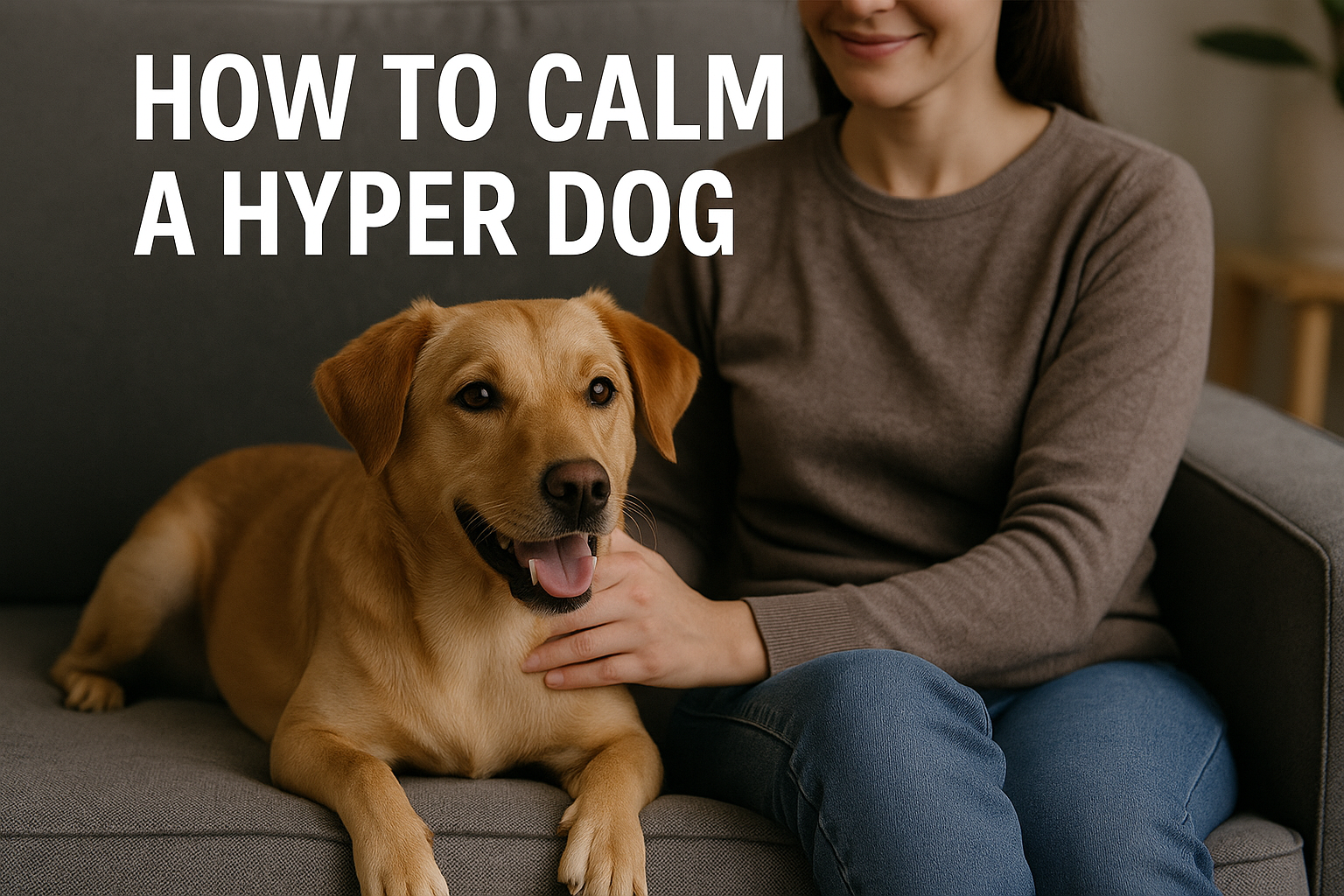Your dog is bouncing off the walls again. They’re zooming through the house, barking at shadows, or spinning in circles for no reason.
You love their energy — but sometimes, it’s just too much.
You’ve probably said “calm down!” a hundred times… and yet, nothing changes.
Here’s the truth: your dog isn’t being bad — they’re overwhelmed.
And once you understand what’s happening inside that furry head, you can help them settle down gently and effectively.
👉 Take the 30-Second Dog Brain Quiz to discover your dog’s personality type and learn how to calm them based on how their brain works.
1. Why Some Dogs Seem “Hyper” All the Time
Dogs don’t have an “off switch” — they have a stimulation cycle.
When they don’t get enough mental or physical outlets, their brain fills the gap with excitement and anxiety.
That extra energy has to go somewhere… so it becomes barking, jumping, or zooming.
The trick isn’t to suppress that energy — it’s to redirect it into something productive.
Hyperactivity is often a symptom of:
- Boredom (not enough brain challenges)
- Inconsistent routines
- Emotional overstimulation
- Lack of self-control training
Once you balance those areas, calmness naturally returns.
2. Yelling Makes It Worse — Here’s Why
It’s tempting to raise your voice when your dog is bouncing off the couch again.
But yelling or punishment triggers your dog’s fight-or-flight response, flooding their brain with adrenaline and cortisol.
Instead of calming down, they interpret your shouting as more excitement or danger.
It becomes fuel for their hyper state — not a solution.
Your dog’s brain learns best in a relaxed state, not a fearful one.
That’s why calm communication always wins over force.
3. The Calm-Energy Rule
Dogs don’t follow words — they follow energy.
If your tone, posture, or emotions are frantic, your dog mirrors that intensity.
The Calm-Energy Rule is simple:
- Don’t speak until you feel calm yourself.
- Move slowly and deliberately.
- Use steady breathing and relaxed posture.
Within seconds, your dog’s nervous system begins syncing to yours.
It’s called social regulation, and it’s one of the simplest, most powerful dog-calming tools you can use.
4. Brain Games: The Secret to Relaxation
A tired dog is a calm dog — but not from running alone.
Mental fatigue actually calms dogs more effectively than physical exhaustion.
Brain games activate your dog’s prefrontal cortex, helping them focus, solve problems, and build impulse control.
Here are a few easy ones to start with:
- Find It: Hide treats around a room and let them sniff them out.
- The Cup Game: Hide a treat under one of three cups and let your dog figure it out.
- Name That Toy: Teach your dog to fetch a toy by name.
These games aren’t just fun — they reduce hyper behavior by engaging your dog’s brain the right way.
👉 Take the 30-Second Dog Brain Quiz to find out which brain games best match your dog’s learning style.
5. Give Clear Structure and Predictability
Hyper dogs thrive on routine.
Knowing what to expect helps their nervous system relax.
Create a simple daily rhythm:
- Morning: brief walk or brain game
- Midday: nap or quiet crate time
- Evening: play + calm affection
Avoid overstimulation late in the day — rough play right before bedtime keeps adrenaline high.
Structure teaches your dog’s brain when to be active and when to rest — like an internal dimmer switch instead of an on/off button.
6. Use Environmental Cues to Encourage Calm
Your dog’s environment affects their mood more than you realize.
Too much noise, clutter, or excitement overstimulates their senses.
Small changes help a lot:
- Dim lights in the evening
- Use calm background music
- Give them a cozy, consistent “quiet spot”
- Use lavender or chamomile scents (dogs respond well to soft aromatherapy)
Over time, these cues signal to your dog’s brain: “It’s time to relax.”
7. Reward Calm Behavior (Even the Small Moments)
Most owners reward excitement without meaning to.
You pet your dog when they jump, talk to them when they bark, or give treats when they demand.
That attention teaches the brain: “Hyper = reward.”
Flip the script.
Reward calm, not chaos.
When your dog settles, takes a deep breath, or lies down quietly — mark it with calm praise or a treat.
Soon, your dog will start choosing calmness on their own.
8. Exercise Helps — But It’s Not the Whole Answer
Yes, exercise matters.
But long walks or fetch alone won’t solve hyperactivity unless your dog’s mind is also engaged.
Think of physical activity as the spark plug, not the engine.
The engine is mental stimulation — puzzles, scent work, obedience games, and training.
When the body and brain work together, you get balance instead of burnout.
9. Avoid Over-Caffeinating Their Day
Dogs can absorb your emotional caffeine — stress, chaos, noise, rushing.
Every outburst of excitement (yours or theirs) triggers another shot of adrenaline.
To calm your dog, start by calming your home.
Slow your voice, create downtime between activities, and keep greetings mellow.
It’s amazing how quickly your dog will follow suit once you model serenity.
10. Brain Training for Dogs: The Gentle Solution That Works
Traditional obedience training relies on correction — but that only controls behavior temporarily.
Brain training rewires it.
The Brain Training for Dogs system, developed by certified trainer Adrienne Farricelli, uses science-backed games to build focus and self-control from the inside out.
Instead of saying “stop it,” you’re saying, “here’s something better to do.”
Your dog learns to channel their energy through curiosity and problem-solving.
Results?
- Calmer behavior
- Stronger bond
- Faster learning
And yes — less yelling, more peace.
👉 Take the 30-Second Dog Brain Quiz to find your dog’s learning personality and get tips that fit their brain, not just the breed.
🦴 Final Thoughts
You don’t need punishment or frustration to calm your dog.
You just need understanding, structure, and brain-based engagement.
Once you start training their mind instead of fighting their energy, you’ll see a calm, confident version of your dog you never knew existed.
Start now — it only takes 30 seconds.
👉 Take the Dog Brain Quiz
Discover how your dog thinks and the easiest way to bring calm energy back to your home.


Leave a Reply